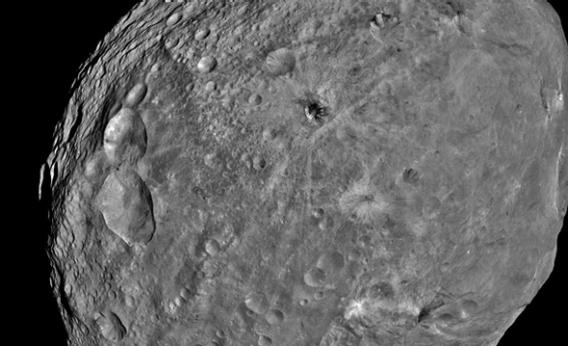Create a free profile to get unlimited access to exclusive videos, sweepstakes, and more!
Two Big Rocks Pass in the Night

Around the same time Mars and the Moon were making each other’s acquaintance earlier this week, two other solar system bodies were prepping to do the same thing: Ceres and Vesta, the two biggest asteroids in the solar system, got pretty close together, too.
That two-frame animated GIF is from astrophotographer Jerry Lodriguss, who took the two pictures an hour apart when the asteroids were separated by about 10 arcminutes, about one-third the apparent diameter of the Moon on the sky. In that short time their motion was visible against the fixed background stars.
When I say “their motion,” I’m actually including a lot of hidden things. Both orbit the Sun, of course; Ceres is about 400 million kilometers from the Sun, and Vesta 350 million. Ceres makes one orbit in 4.6 years; Vesta 3.6.
But there’s more! The Earth is orbiting the Sun, faster than either asteroid. We sit on Earth and sweep past them, like a passenger in a car passing cars in other lanes. You have to account for everyone’s movement if you want to figure out just how the two asteroids move and send spaceships there.
Which, in fact, we have done: NASA sent the Dawn spacecraft to visit Vesta, and it stayed in orbit around the asteroid for a year. It left Vesta in late 2012 and is now approaching Ceres. It’ll arrive and go into orbit in February 2015.
From Earth the asteroids are barely bigger than dots (even to Hubble). But when you go there they look like this:
Yeah. That’s what Vesta looks like when you’re a few hundred kilometers away. Right now we only have blurry image of Ceres, but in a few months that will change a lot. What will we see? If we knew that, we wouldn’t have to send probes there.
Space exploration is pretty cool. It turns lights in the sky into worlds! Each different, each wondrous, each with so much to teach us.
And they’re fun to watch, too.














